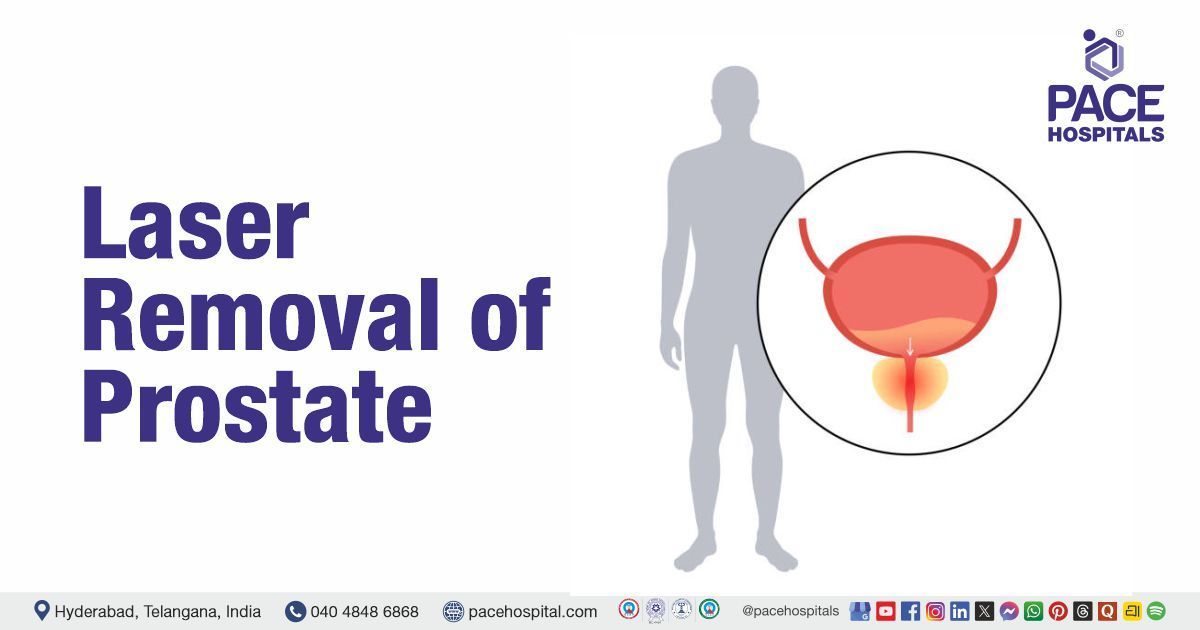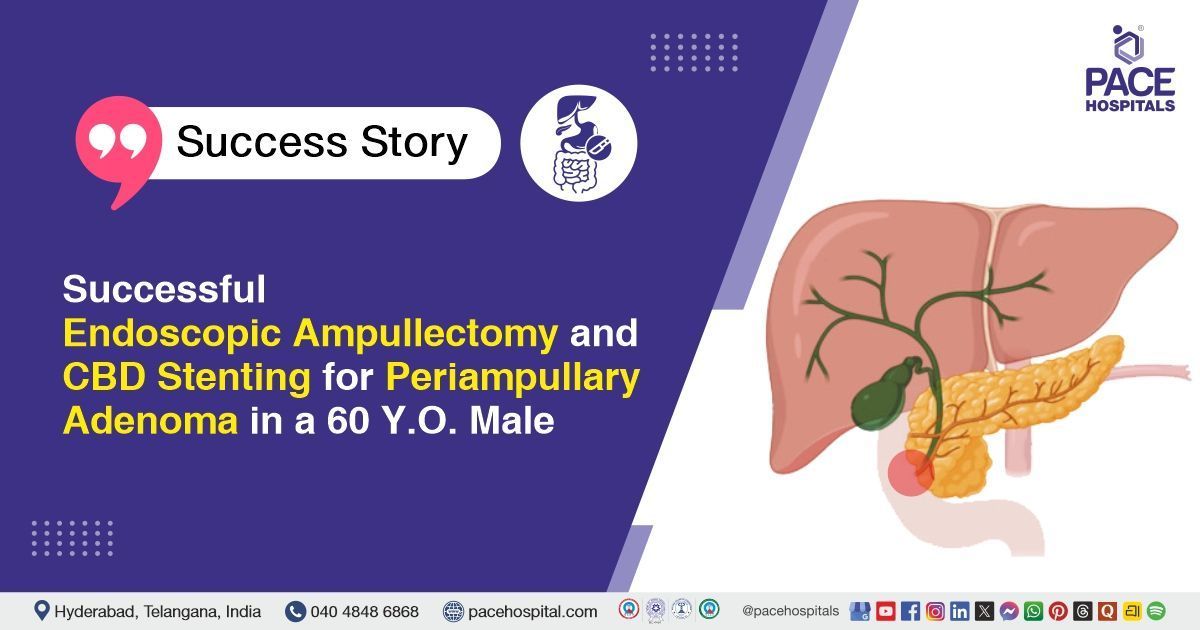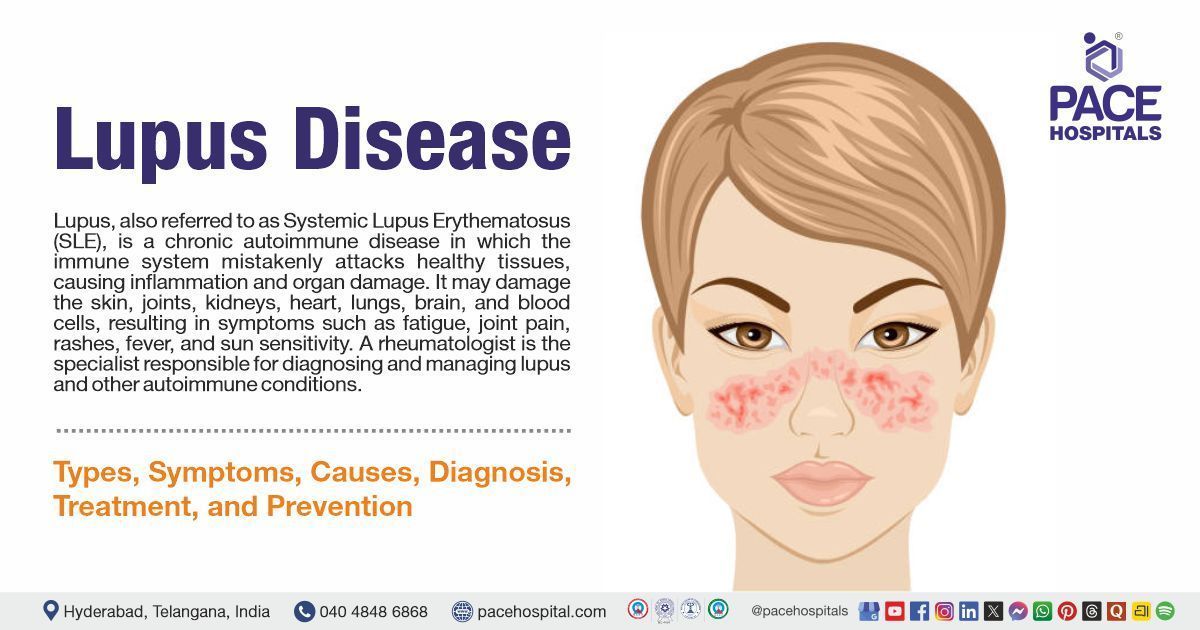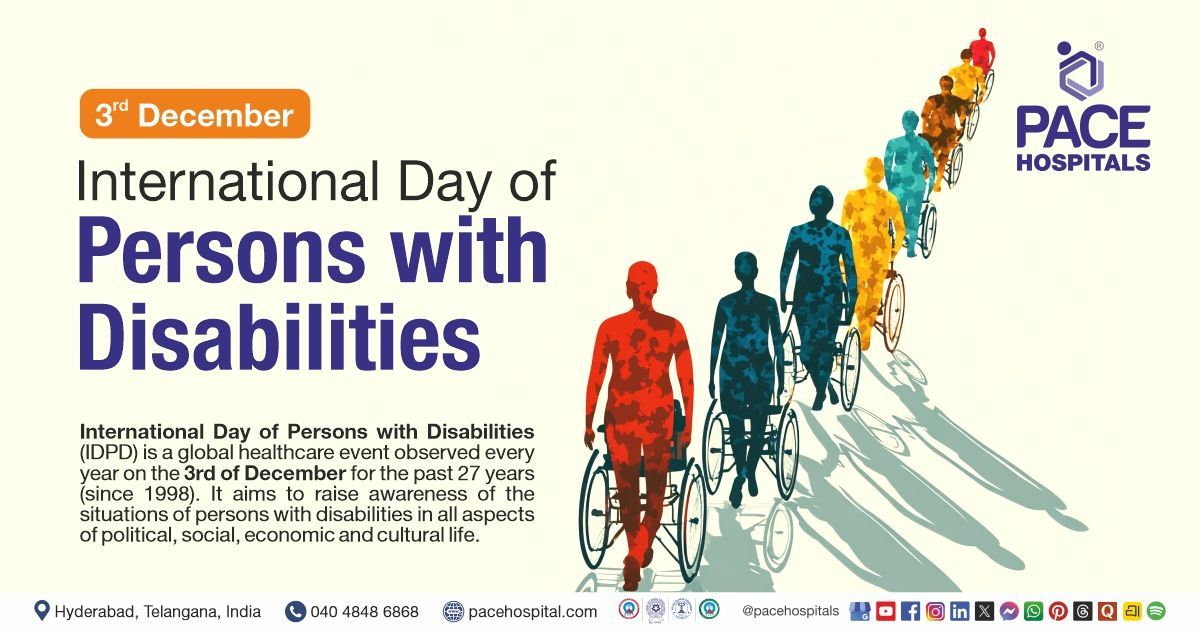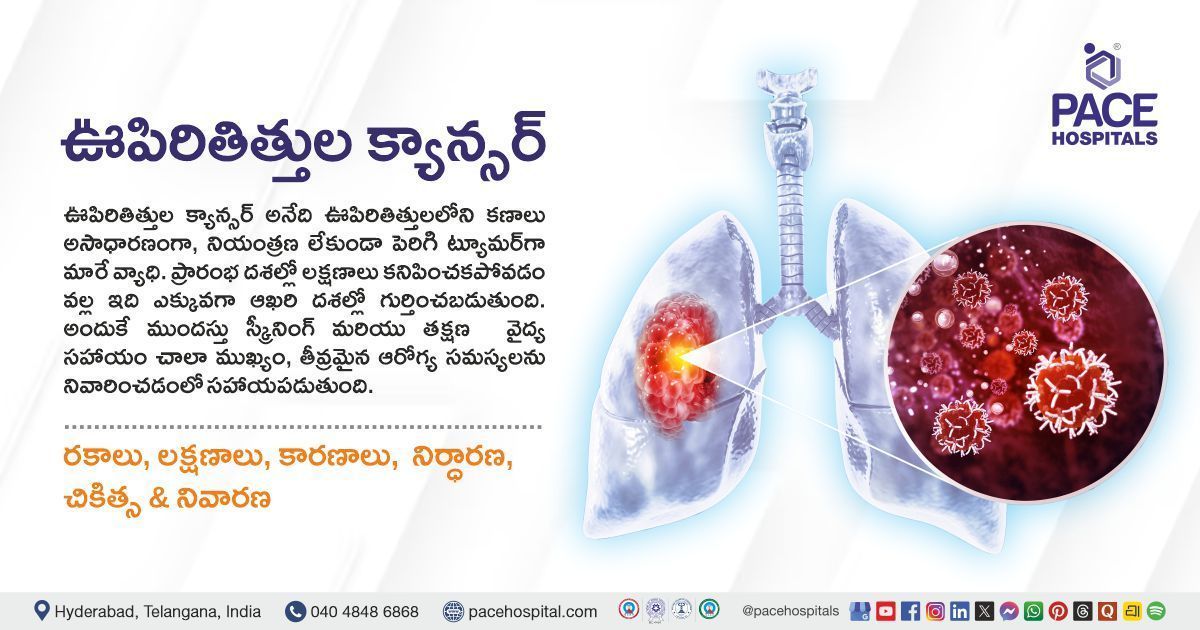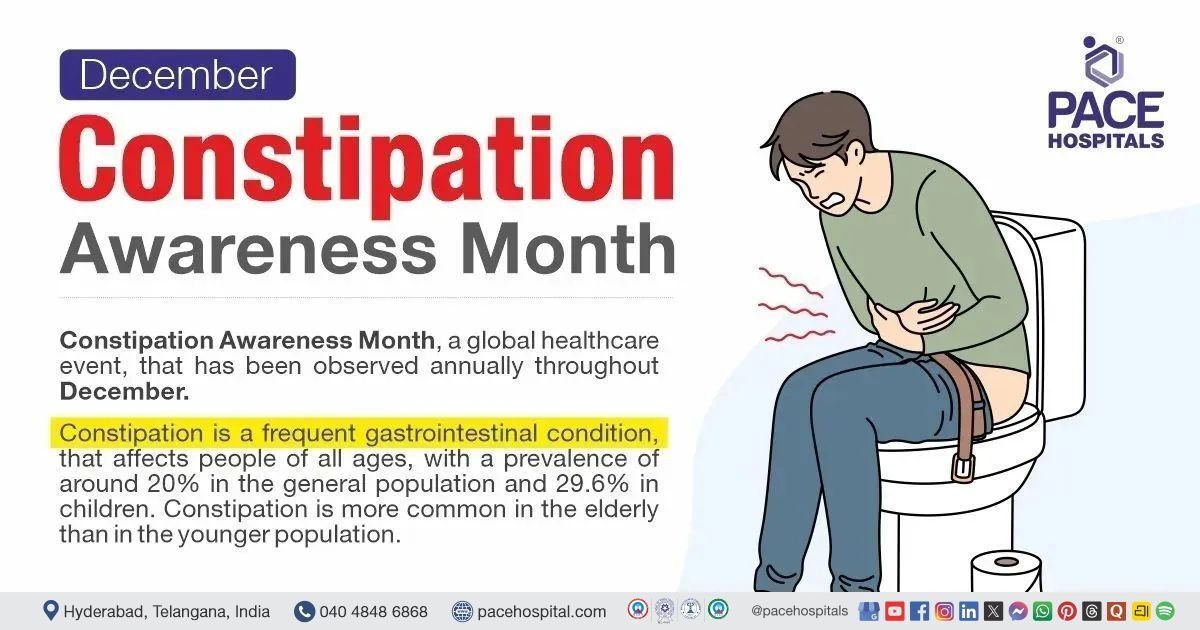Holmium Laser Enucleation of the Prostate (HoLEP) – Permanent Solution for Enlarged Prostate
PACE Hospitals
Introduction
The recent development of laser technology in urology has changed the way doctors treat a variety of urinary diseases. Among these, the Holmium Laser Enucleation of the Prostate (HoLEP) stands out as a groundbreaking technique that has redefined surgical care for men suffering from benign prostatic hyperplasia (BPH) — a non-cancerous enlargement of the prostate gland.
HoLEP is precise, minimally invasive, and offers faster recovery compared to conventional prostate surgeries such as TURP (Transurethral Resection of the Prostate). It is now regarded globally as the gold standard treatment for large prostate glands causing urinary obstruction.
Before learning how HoLEP works, you need to understand the prostate function, why it enlarges, and how it affects urinary health.
Applications of Lasers in Urology
Modern laser technology has revolutionised the management of several urological diseases. Modern high-intensity lasers such as Holmium, Thulium, and GreenLight lasers are widely used for precision surgery with minimal bleeding.
Key Applications:
- Benign Prostatic Hyperplasia (BPH): Laser vaporisation or enucleation (HoLEP, Thulium laser)
- Urinary Stones: Laser lithotripsy enables in breaking down kidney stones, ureteral, or urinary bladder stones
- Urinary Cancers: Laser resection of bladder tumors
- Urethral Strictures: Laser incision helps to relieve obstruction
These minimally invasive approaches ensure better safety, shorter recovery, and lower complication rates — making lasers indispensable in modern urology.
What is the Prostate?
Prostate gland is a small, chestnut-sized organ that forms part of the male reproductive system, located just below the bladder and in front of the rectum. The urethra, which carries urine from the bladder out of the body, passes through the center of the prostate.
The prostate's major role is it produces seminal fluid, which nourishes and transports sperm.
As men age, the prostate naturally enlarges. While mild growth is normal, significant enlargement can compress the urethra, resulting in urinary obstruction.
What Is BPH (Benign Prostatic Hyperplasia) or BEP (Benign Enlargement of the Prostate)?
Benign Prostatic Hyperplasia (BPH) is a condition in which the prostate gland enlarges without being cancerous. It's among the most common conditions affecting men over 40 years of age and one of the leading causes of lower urinary tract symptoms (LUTS).
BPH becomes more common with age — about 50% of men between 51–60 years, and up to 90% of men over 80, experience prostate enlargement. It can severely impact quality of life if not managed properly.
Common Symptoms of Prostate Enlargement
Since the prostate surrounds the urethra, its enlargement narrows the urinary passage, causing obstructive and irritative symptoms.
Irritative Symptoms:
- Frequent urination, particularly at night (nocturia)
- Sudden or urgent need to urinate
- Burning sensation or discomfort during urination
Obstructive Symptoms:
- Difficulty in starting urination (hesitancy)
- Weak or intermittent urinary stream
- Post-void dribble (PVD) occurs when urine remains in the urethra after urinating and leaks out afterward.
- Straining to urinate
- Feeling of incomplete bladder emptying
If left untreated, prostate enlargement can lead to urinary retention, bladder stones, and kidney failure.
Does BPH Lead to Prostate Cancer?
No. BPH is non-cancerous condition and does not turn into cancer. However, both conditions can occur simultaneously. Since early prostate cancer can be assymptomatic, men with prostate enlargement are advised to undergo screening tests, such as PSA (Prostate-Specific Antigen) testing and a digital rectal exam (DRE), to rule out malignancy.
Treatment Options for Prostate Enlargement
Treatment care depends on symptom severity, prostate size, and overall health. It may range from lifestyle changes, medications, or surgery to interventions when needed.
Lifestyle Modifications
- Avoiding excess intake of fluids before going to bed or nighttimes.
- Limit caffeine, alcohol, and carbonated beverages.
- Empty the bladder completely during each urination.
- Maintaining a healthy body mass index and engage in regular physical activity.
Medical Management
- Alpha-blockers (e.g., Tamsulosin, Alfuzosin) — relax the bladder neck and prostate muscles.
- 5-Alpha-reductase inhibitors (e.g., Finasteride, Dutasteride) — shrink the prostate over time.
- Combination therapy is often used for better outcomes.
If these fail to relieve symptoms, surgical intervention becomes necessary.
Surgical Options for BPH
Traditional Surgery (TURP)
Transurethral Resection of the Prostate (TURP) is the conventional procedure for BPH. It involves using an electrical loop to remove obstructive tissue. Though effective, TURP can cause significant bleeding, longer hospital stays, and limited suitability for large prostates.
Modern Laser Technique – HoLEP
HoLEP has revolutionized the management of enlarged prostates, offering a safer and more effective surgical option. It offers a bloodless, durable, and safe alternative to TURP and open prostatectomy.
What Is HoLEP?
HoLEP (Holmium Laser Enucleation of the Prostate) is an advanced laser surgery that removes excess prostate tissue causing obstruction to urine flow.
During HoLEP, a surgeon uses a holmium laser fiber to carefully separate the enlarged tissue (adenoma) from the prostate capsule. The removed tissue is then morcellated (cut into small pieces) and extracted through the urinary passage — without any external incision.
HoLEP removes the entire obstructive portion of the gland, similar to open surgery, but through a minimally invasive route. This means nothing is left behind to grow back, providing a permanent solution to urinary obstruction.
Preoperative Care for Laser Removal of Prostate (HoLEP)
Before HoLEP surgery, patients undergo thorough evaluation at PACE Hospitals to ensure safety and best outcomes.
- Medical & Diagnostic Tests: CBC, renal function, blood sugar (Diabetes), coagulation profile, urine culture, ultrasound KUB, and ECG.
- Medication Review: Blood thinners are paused if required; antibiotics given for infection prevention.
- Anesthesia Check: Assessment to confirm fitness for spinal or general anesthesia.
- Preparation: Fasting 6–8 hours before surgery, surgical site cleaning, and IV line insertion.
- Counselling: The doctor explains the procedure, benefits, possible risks, and postoperative care before consent.
Step-by-Step: How HoLEP is Performed
- Anesthesia: The procedure is performed under spinal or general anesthesia.
- Laser Enucleation: Using a holmium laser to remove the prostate tissue that is blocking the flow of urine.
- Tissue Morcellation: The removed prostate tissue is shredded and extracted using a morcellator.
- Hemostasis: The laser seals small blood vessels instantly, minimizing bleeding.
- Catheterization: A urinary catheter is placed temporarily and usually removed within 12–24 hours.
The entire process takes 60–120 minutes, depending on the prostate size.
Advantages of HoLEP over Conventional TURP
| Feature | HoLEP (Laser Surgery) | TURP (Traditional) |
|---|---|---|
| Bleeding | Minimal | Moderate to high |
| Hospital Stay | 1–2 days | 4–5 days |
| Catheter Time | 12–24 hours | 2–3 days |
| Size Limit | No upper limit | < 80 grams |
| Suitability for Heart Patients / Anticoagulants | Excellent | Risky |
| Recurrence Rate | Very low | Moderate |
| PSA Reduction | Significant | Partial |
| Durability | Lifelong | 5–10 years |
HoLEP is especially beneficial for elderly and cardiac-risk patients, as it involves minimal blood loss and short recovery.
Cost of HoLEP (Holmium Laser Enucleation of the Prostate)
The cost of laser prostate removal (HoLEP) varies based on a number of criterias, such as hospital's facilities, surgeon experience, prostate size, length of hospital stay, and the patient's overall health condition. While HoLEP is more technologically advanced than traditional procedures like TURP, it is often more cost-effective in the long term because of shorter hospitalization, fewer complications, and minimal risk of recurrence.
| Type of Expense | Estimated Cost in India (₹) | Approx. Cost (USD) | Description |
|---|---|---|---|
| Pre-operative Evaluation | ₹20,000 – ₹40,000 | $250 – $480 | Contains blood tests, PSA test, urine flow studies, and anesthesia assessment |
| Surgery (HoLEP Procedure | ₹1,80,000 – ₹3,50,000 | $2,150 – $4,200 | Covers laser surgery, anesthesia, and surgeon fees |
| Hospital Stay & Medications | ₹25,000 – ₹40,000 | $300 – $500 | Generally, a 1- to 2-day admission with post OP care |
| Total Estimated Package | ₹2,25,000 – ₹4,00,000 | $2,600 – $4,800 | Depends on hospital category (standard / premium / deluxe rooms) |
Note: Prices are suggested and may vary between hospitals, localities, and insurance types. Patients with health insurance can receive cashless treatment, however self-paying patients can choose EMI or simple financing alternatives in specific centers.
In metropolitan areas such as Hyderabad, Chennai, Mumbai, or Delhi, hospitals with advanced urology departments and high-power Holmium laser setups tend to charge near the upper end of the range, while smaller regional centers may offer slightly lower costs.
Although the upfront cost of HoLEP can appear higher than conventional TURP, patients often save significantly on:
- Shorter hospital stay (usually 1–2 days)
- Minimal postoperative complications
- No need for repeat surgery later due to regrowth
Overall, HoLEP provides superior long-term value and better quality of life for patients with enlarged prostate (BPH).
What Happens If You Delay Surgery?
Refusing or delaying surgery can lead to bladder decompensation — where the bladder muscle weakens due to prolonged obstruction.
This can cause:
- Persistent residual urine
- Recurrent infections
- Bladder stones
- Acute urinary retention
- Backpressure on kidneys (hydronephrosis), leading to renal impairment
Timely intervention with HoLEP prevents these complications and preserves kidney function.
Recovery and Postoperative Care after HoLEP
- Hospital Stay: Patient generally stays in the hospital for 24–48 hours
- Catheter Removal: In most cases, it is removed within 12–24 hours
- Resumption of normal activities: Resume within 5–7 days.
- Urine Flow Improvement: Noticeable immediately, with continued progress over the following days
Most of the patients report improvement in bladder emptying and urine flow straight after the surgery. Mild burning or frequency may last for some days.
Possible Side Effects
Though it is rare and temporary, patients may experience:
- Burning sensation or mild discomfort during urination
- Small amounts of blood in urine (usually self-resolving)
- Retrograde ejaculation (semen enters bladder instead of exiting) — harmless but permanent
- Transient urgency or frequency
Serious complications such as infection or re-obstruction are extremely rare (<1–2%).
Long-Term Outcomes of HoLEP
Studies have shown that HoLEP has long-term effects on males with BPH:
- Excellent urinary flow rates (Qmax improvement)
- Sustained symptom relief for 10–15 years
- Low retreatment rate (<2%)
- Significant PSA reduction indicating complete tissue removal
It is now considered the benchmark technique for surgical management of BPH worldwide.
FAQs on Laser Removal of Prostate – HoLEP
What is HoLEP?
HoLEP is a minimally invasive laser procedure that removes enlarged prostate tissue blocking urine flow, providing lasting relief from BPH.
How is HoLEP different from TURP?
Unlike TURP, which removes tissue using an electric loop, HoLEP uses laser energy for bloodless precision, faster recovery, and complete tissue removal — with no upper size limit.
Who is an ideal candidate for HoLEP?
Men with moderate to severe urinary symptoms, large prostates, or those on blood thinners who are unfit for traditional surgery benefit most from HoLEP.
How long does recovery take after HoLEP?
Most patients are discharged within 24–48 hours and can resume daily activities within a week, experiencing immediate improvement in urinary flow.
Is HoLEP safe for elderly or cardiac-risk patients?
Yes. Because it causes minimal bleeding, HoLEP is highly suitable for older men or those taking anticoagulant medications.
Can HoLEP affect sexual function?
Erectile function is preserved in nearly all patients. Some may experience retrograde ejaculation, which doesn't affect sexual satisfaction or health.
Will the prostate grow back after HoLEP?
No. HoLEP removes the entire adenomatous tissue of the prostate, effectively preventing regrowth and providing long-lasting results.
How long does the HoLEP procedure take?
The procedure usually lasts 1–2 hours, based on the size of the prostate and the patient's condition.
Does HoLEP require a hospital stay?
Usually 1–2 days, significantly shorter than traditional procedures like TURP or open prostatectomy.
What are the long-term results of HoLEP?
Studies show HoLEP offers permanent symptom relief, improved urine flow, and negligible recurrence, making it the gold standard for BPH surgery.
Share on
Request an appointment
Fill in the appointment form or call us instantly to book a confirmed appointment with our super specialist at 04048486868

